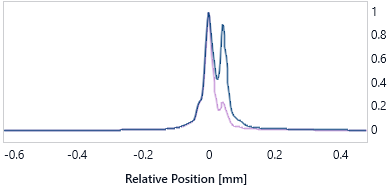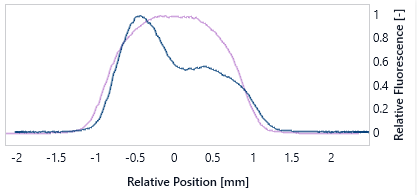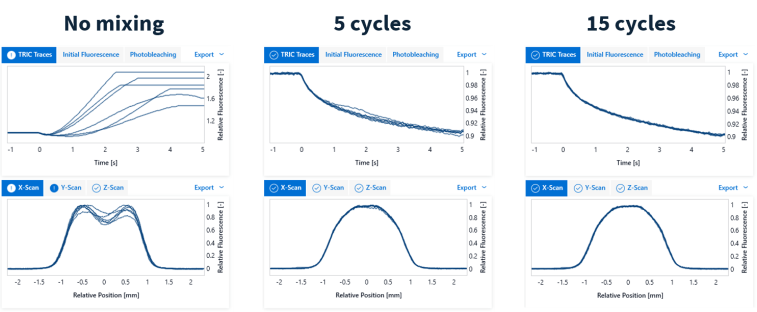Liquid Handling
The accuracy of liquid handling systems can greatly impact the quality of the resulting data. The most important factors to keep in mind are:
1. The addition of detergents or rapid pipetting can lead to the formation of air bubbles in the well. If air bubbles are within the detection area, they can easily be identified by an M- like Z-scan. The transition from the aqueous sample to the air bubble back to the liquid leads to a sudden drop in reflected light signal, just above the bottom of the well. As they can negatively affect the measurement result, air bubbles should be avoided or eliminated prior to measurement. It is therefore recommended to centrifuge the uncovered plate for 30 sec at 1000 x g before loading into Dianthus.


This figure to the left shows a well with an air bubble (dark blue) in comparison to a normal well in the Z-Scan. Note that sometimes air bubbles are not in the center of the well like in this example but rather at the side, and can then be identified in the X- or Y-Scan (figure to the right).
2. TRIC traces that differ significantly from the standard can be caused by errors in sample preparation. Poor mixing results in a rapid increase in relative fluorescence after switching on the IR laser, so that it even exceeds the initial fluorescence. The convective flow during heating leads to mixing of the non-homogeneous sample. Initially there are fewer fluorescent molecules in the focus than after mixing, so that a low value for the initial fluorescence is assumed. In addition, X- and Y- well scan anomalies can occur due to the non-homogeneous distribution of the fluorescence, e.g. an M-like shape. If a measurement shows the described characteristics, it is advised to thoroughly mix the wells again or to check the mixing properties of the liquid handling system used. It is often sufficient to increase the number of mixing cycles or the mixing volume used. We recommend at least 15 aspiration and dispense steps with 80% of the total volume or alternatively the use of efficient plate shakers.

The figure shows the same wells without mixing, 5 cycles of manual mixing and 15 cycles of manual mixing.